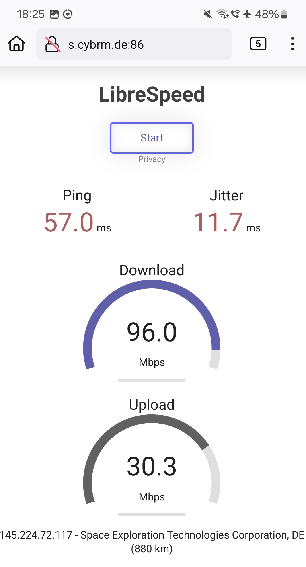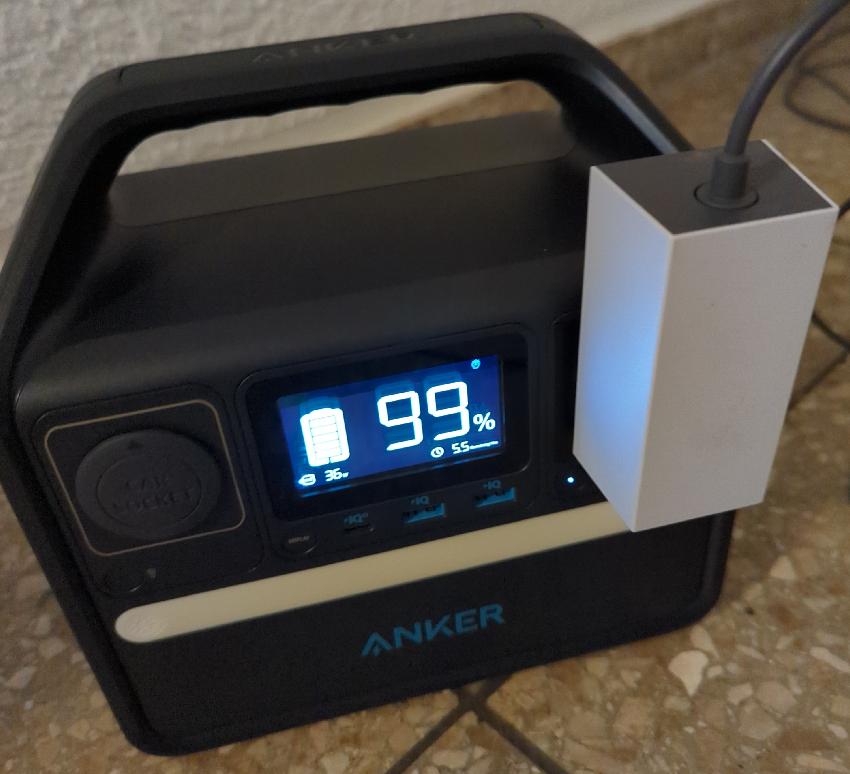
Once having made the decision to order a Starlink Mini, it only took a few days to be delivered. And indeed it is very small and portable compared to the previous hardware and can easily be carried in a small backpack. Part 1 has an image of the Mini on my bike for size comparison. So what about power and performance?
After ‘unboxing’ I went up to the roof of my house to set-up Mini-Dishy there and was rewarded with Internet connectivity around a minute and a half later. Speeds were a bit mixed that evening, but I was able to get around 100 Mbps in the downlink direction and 30 Mbps in the uplink direction in a first speed test with a round trip delay time of around 30 ms. That speed seems to be a bit slower than what I could previously get with the larger dish, but not much, if at all.
Running on Battery

For this test, I powered the Starlink Mini with my large Anker Powerstation which showed that power consumption is in the range of 21 to 40W. These values are also mentioned in the Starlink Mini specification document, which you can find here. On average, Mini-Dishy requires around 21 Watts of power, I only observed 40 Watts and higher peaks for the first minute or two after power on. While 21 Watts are still a lot, it means that the Anker Power Station, which weighs 3.5 kg, can power the setup for around 9 hours. That is twice the time compared to the previous hardware. Very nice, but my setup was quite inefficient, as power had to be converted from low voltage DC to 220V AC and then back to the low voltage DC required by the dish.
Running on a Smaller Battery

Also, the lower power requirement allows the use of a smaller battery. Starlink sells a USB-C to Mini-Dishy converter cable and points out that the power bank must be able to deliver at least 100W of power. I tried with my older USB-C power bank that can deliver 60W and while the status light on Dishy came on, the boot process ended up in a loop. So I went ahead and bought a new USB-C power bank that supports USB Power Delivery (PD) with 100W, and Dishy worked very well with it. The power bank weights 500g and with it’s capacity of 72 Wh, and it can run the Mini for 2h45 minutes in practice. That’s 180g you have to carry for every hour of Starlink use. Unlike the big Powerstation, this battery can easily be carried in my small backpack as well.
So much for today. In the next post, I’ll have another look at performance and how well Mini-Dishy can deal with obstructions.
The Spec says its not compatible with 3rd party mesh systems. I wonder why not.
Hi Glenn, good question, don’t have an answer, though.